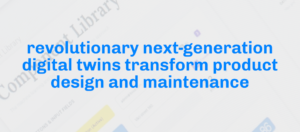::: nBlog :::
When I spontaneously elaborate the power of spime to a new audience without any prepared material, I usually pick an object from the space we happen to be in. In many cases it has been the paper cup I’m drinking coffee from.
I know a thing or two about the packaging business through my own direct experience and also recently through our loyal customer Amcor, a global packaging leader. I’ve seen machines creating millions of cups (and other packages) for wildly different needs and customers. The precision molding and real time printing of just-in-time information to each product is fairly amazing.
A paper cup is very cheap. Even a high-end one for hot liquid rarely costs more than 2 cents a piece when bought in hundreds. Adding any self-communicating capability, such as 4/5G, Sigfox or LoRa is far fetched, as it would mean impossible production costs today. However, a passive RFID paint capable of emitting just the cup serial number, temperature and integrity is quickly becoming reality. When this information is read with e.g. 100 meter radius (which we do today for construction site tool and personnel RFID tags) we’re suddenly looking at a situation that millions of cups can be tracked by the manufacturer in real time.
Why would the manufacturer do this? Well, for the existing business model there would be the incremental efficiency gain in making sure customers get new cups before the local warehouse runs out of them – in other words, a better ERP. However, this is hardly enough to justify touching the delicate production machinery with new types of semiconducting ink, and equipping customer delivery sites with base stations capable of reading cups.
In order to disrupt the market, the cup maker must create a new business model, Cups-as-a-Service, in which customers and their current needs are continuously tracked and this information is used to improve the cup service, all the way to the cup base material, all the time, to each customer, individually. Mass customization.
This means bulldozing a lot of existing wholesalers and other middlemen in the legacy cup value chain and it will be tremendously difficult. However, if you’re a cup manufacturer, you want to do this before your competition bulldozes you.
//Pasi




2 replies on “Scaling to Paper Cups”
Hello basen.net admin, You always provide valuable information.
Hi basen.net admin, Keep the good content coming!